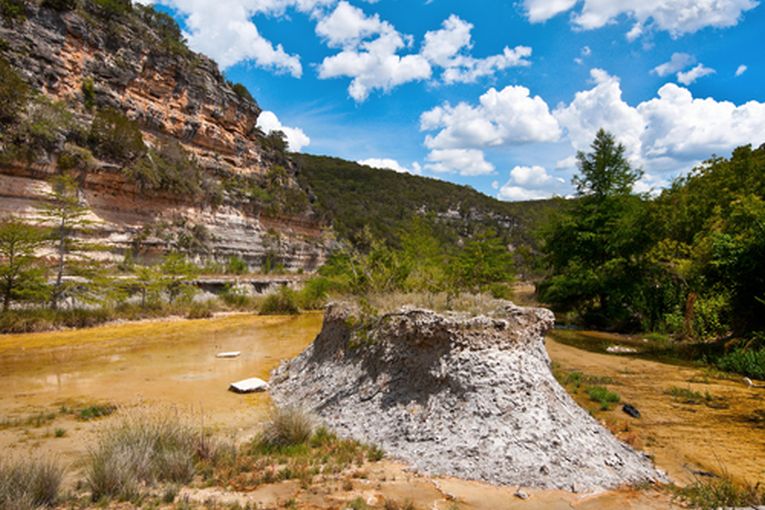What everybody wants to know is how worldwide disaster is connected to global warming. At the moment, suspicion, innuendo and rumour rule. The American Meteorological Society, collaborating with several other major international weather institutions and many separate research teams, have brought out a Special Supplement to their September Bulletin to answer as many questions as possible. They are to be commended, because this involves us all.
Science is unable to pinpoint every one of the 19 events that are covered as either caused by warming or not. Also, in climatology itself, there are no pressure groups, simply more-or-less honest competition among researchers. Uncertainty and statistical analyses are also covered, in a very reassuring tone that the papers set.
Despite great agreement, which is rife these days, there were different causes for the events that are covered in this giant set of papers, and several natural factors involved too. The UK Meteorological Office, in the form of Peter Stott are claiming that, "We have got some new evidence here that human influence on climate has changed the risk, and has changed the risk enough that we can detect it."
Rain in the extreme, as the first topic, was covered in Australia and New Zealand. China and Thailand too suffered badly from such floods. Their resolution as natural or caused by global warming is a complex computer modelling process and the answer often turns out to be both.
Arctic ice loss is perhaps the most relevant world event that affects everyone with sea level rise.3.41 million square kilometres of ice was all that remained at late summer in 2012. A great storm in early August didn't help, as it disrupted the remaining ice and cause more melting and break-up. The storm seems not to have added much to the sea-ice loss from warm surface conditions. What is certain is that our own activities have raised the temperature sufficiently to threaten the whole of the Arctic ice!
In Texas and elsewhere, low precipitation means drought and water restriction. In the desert themselves, reduced precipitation means death and extinction. 2012 brought severe drought to almost the whole of the continental US, the most extensive in 60 years, in 32 states. 1934 and 1936 (the Dust Bowl years) were the most recent hot dry years for some areas. We know already that 2013 is experiencing the same conditions and both Texas and Oklahoma had a severe drought/heat-wave in 2011 too!
Rainfall study alone can now be associated absolutely with forced conditions caused by global warming and not with natural conditions. These conditions are nowadays four times as likely as pre-global warming conditions. Heatwaves , equally dangerous in some areas, are thought to be 12 times more likely now, because of our carbon and other emissions.
Hurricane Sandy from 29/30th of October, 2012, was also covered. Peak high tides coincided with the hurricane to make the effects considerably worse than the expected disaster.. The impacts were record-breaking incidents that should not be repeated, but they might, according to analyses with models trying to predict connections between the warming planet and stronger hurricane force. In 1821, apparently, a similar but lesser situation could have given better warning of this impact than was given. In fact smaller hurricanes in future are expected to have the same effects as Sandy. Not a pleasant prospect. We have warmed the engine up, and now these hurricanes have more devastating results.
The evidence shows that half of all the studied extremes were due to climate change. That is basically anthropogenic, as humans have been the biggest influence on climate for the last century or two.
What seems to be clear for the meteorologists is that many weather changes such as cold Netherlands February's or Kenyan/Somali droughts are not part of the global warming sequences. Lots of rain can be connected to the warming patterns, but not always, it seems. In 2011, there was a mild start to the Western European winter (5th warmest on record), but high pressure built over the east and migrated to the Netherlands.
Bitterly cold Arctic draughts from the NE swept in to lower the temperatures to 10 degrees C below average for 2 weeks in February. Strangely, the thriving Dutch canal-skating community found the ice wasn't forming to a safe thickness. It's obvious that the ice itself, "frustrates its own growth," by insulating the water beneath. However, the water column throughout the depth of the canal has to be cooled to 4 degrees before any dynamic mixing can be prevented, so the skaters had to abandon 200km of a delightful Frisian skating festival.
The conclusion is that snow, in fact, was the culprit, falling on the thin ice to further insulate the water below. Freezing was impossible to a suitable depth, but global warming was not responsible.
Of course the warming Arctic tends to bring colder winds to Western Europe, but the prime cause of cold weather obviously need not be global warming! An addendum to the European cold situation is whether global warming is causing the increased precipitation of snow that did make the skaters to cry in their canals.
Thomas C. Peterson of NOAA and three of his colleagues manfully edited the giant text of this special supplement and presented the data.










